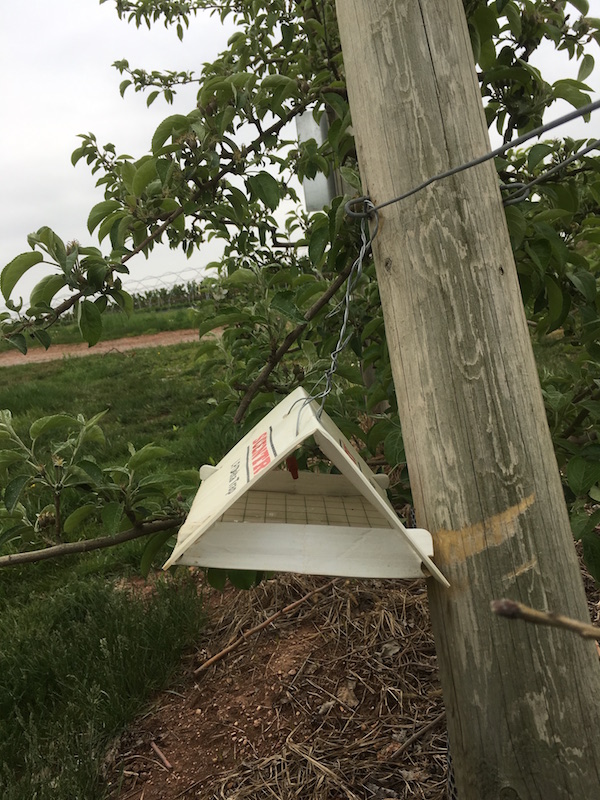As many of our customers know, we practice an Integrated Pest Management System (IPM) here at Weaver’s Orchard. Sounds impressive, but what does it really mean? It means a lot of things, but at the core of this philosophy is a beautiful balance of a variety of methods for monitoring and treating our plants for pests. Maintaining an IPM balance ensures we are not spraying or intervening any more than necessary, yet still maintaining adequate population control of our pests and ending up with delicious fruit.
Our goal is not to obliterate harmful bugs to the point of extinction on our farm. Instead, our goal is simply to control population numbers so we still end up with a good quality marketable fruit.
While there are many pieces to an IPM puzzle, I want to highlight one part of it today that I find fascinating!
One IPM method we have used in the past has included mating disruption. We tie twist ties to our trees that release a species-specific pheromone scent that confuses that particular pest and disrupts their mating.
This year, we heard of a new technology in the mating disruption field that could maximize our potential to disrupt pests’ mating without the use of pesticides. This technology would allow us to program specific automated release times of pheromone plumes to efficiently disrupt pest mating. We couldn’t wait to try it out!

What exactly are Pheromones?
Pheromones are a hormonal scent (that humans can’t smell) that disrupt mating of a specific targeted insect. We will be using the devices specifically to target Coddling Moth (CM) and Oriental Fruit Moth (OFM). CM and OFM are harmful to our plants because they lay their eggs on the fruit and leaves of our apples and pears. The eggs then hatch into worms which crawl into the fruit. CM are the most common worms you would find inside an apple or pear, while OFM tend to attack most other tree fruit we grow as well as the blueberries.
Installing the New Devices
The new device we are using is called a Puffer. Seriously. Despite the mental images this name conjures up, it is just a simple device that we place in predetermined elevated locations throughout the whole orchard. We received assistance from the Puffers’ technical support manager to map out the best and most effective placement locations.
This new technology allows us to program our Puffers to release pheromones that disrupt Coddling Moth and Oriental Fruit Moth mating by making the entire area smell like the CM and OFM females. Because the whole area will smell like a female moth, the males will not be able to find their mates and will eventually move on to a less confusing site to “do their deed.”

Integrating “Puffers” with Existing Methods
We monitor the population of our pests by setting traps throughout the orchard, which look like these triangular pyramids.
They are coated on the inside with a sticky adhesive that will cause the bugs to stick and stay put when they land inside the trap. We monitor our traps on a frequent basis to keep records on each pest’s “biofix” (the date when they first make their seasonal appearance).
Knowing a specific pest’s biofix in many cases aids us in knowing when, where, and what to spray. Determining our biofix date for CM and OFM aids us in programing our Puffers to release the proper amount of pheromone at the proper time: when the CM or OFM would most likely be mating in the greatest numbers. This will maximize the mating-disruption potential.
Another note about our traps: we do not feel alarmed if our traps contain a handful of harmful bugs. When the population of any given pest rises to a scientifically predetermined and species-specific number of insects per trap, then we know it’s time to take action. Until then, we do not spring into action. Again, our goal is population control, not obliteration.
We are continuing to use the twist tie methods for other insect populations because Puffers have not yet been developed for other species.
We are excited to try out this new Pheromone technology and hope to see new devices develop in the near future that help us more specifically target those nasty pests and help us grow that yummy and tasty fruit we all love to eat!
I hope you have enjoyed this little lesson in fruit growing! As always, we hope to see you here on the farm!


